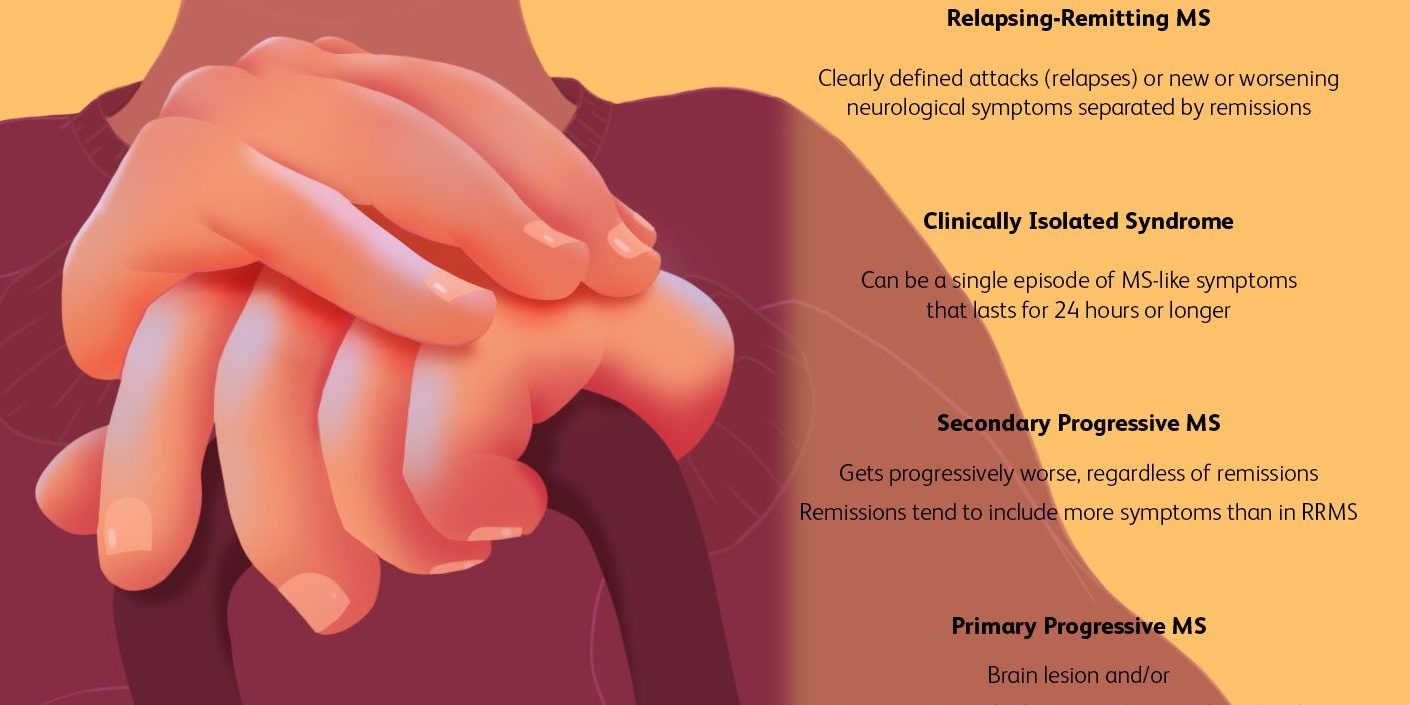Currently there are four identified types of multiple sclerosis: clinically isolated syndrome (CIS), relapsing-remitting MS (RRMS), primary progressive MS (PPMS), and secondary progressive MS (SPMS).
Clinically isolated syndrome refers to the first episode of neurologic symptoms caused by inflammation and destruction of the myelin in the central nervous system. You can be diagnosed with clinically isolated syndrome (CIS) if:
- At one occasion you have had symptoms like the ones people with MS get
- an MRI scan shows harm in your brain or spinal cord that is like MS
Relapsing-remitting MS is distinguished by periods of relapses (new symptoms or attacks consisting of worsening older symptoms) that subside, with full or partial recovery, and no progression of the condition between attacks.
Secondary progressive MS comes after relapsing-remitting MS in some people and is identified by a more progressive course, with or without relapses or new MRI activity. With this type of MS, there are no longer any signs of remission and this signifies that the condition is worsening despite treatment. Primary progressive MS is indicative by a gradual but steady progression of disability from the onset of symptoms, with few or no relapses or remissions. This can be further identified as either active (with an irregular relapse and/or evidence of new MRI activity over a specified time frame) or not active, as well as with progression (evidence of disability accumulated over time, with or without relapse or new MRI activity) or without progression.



